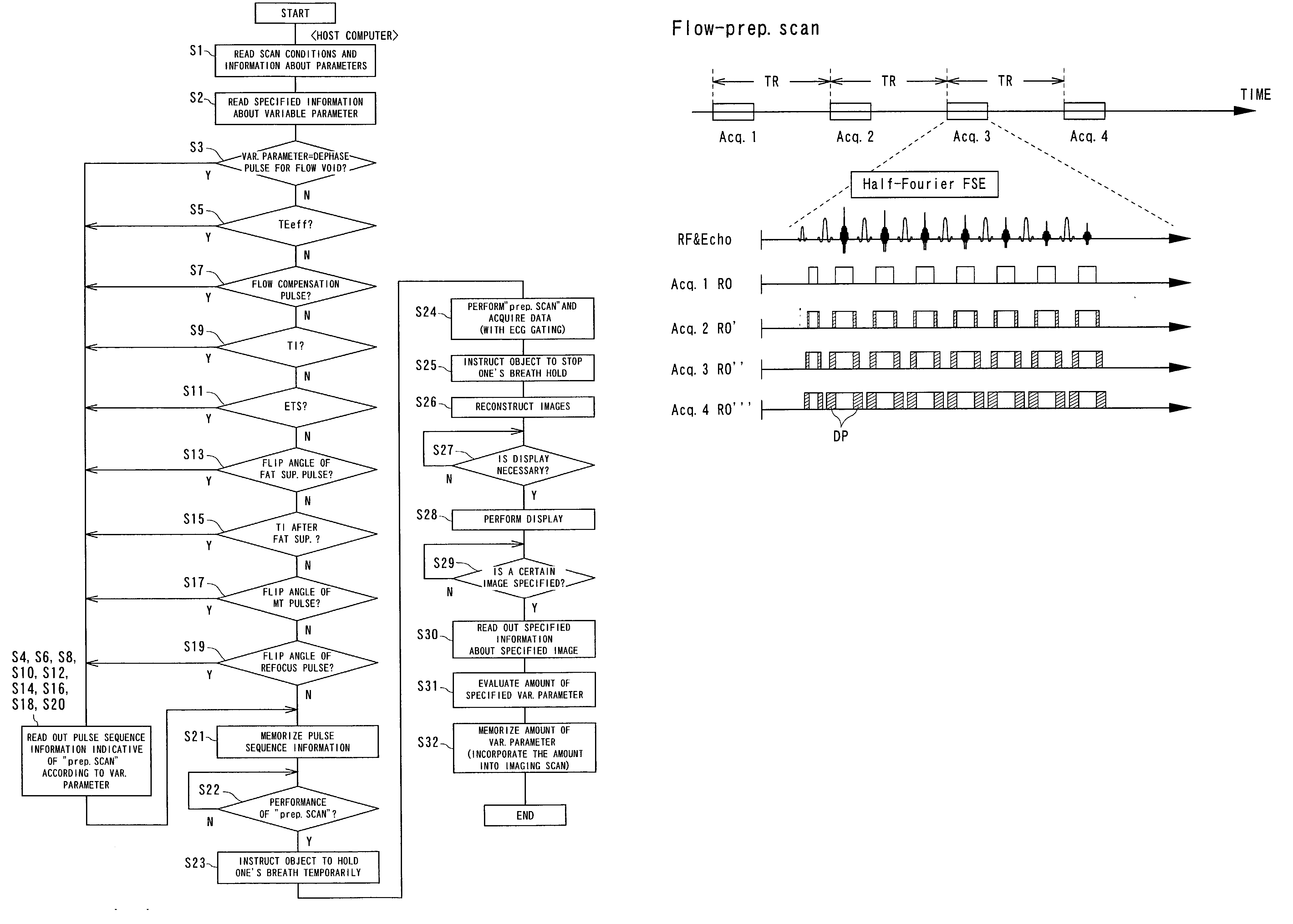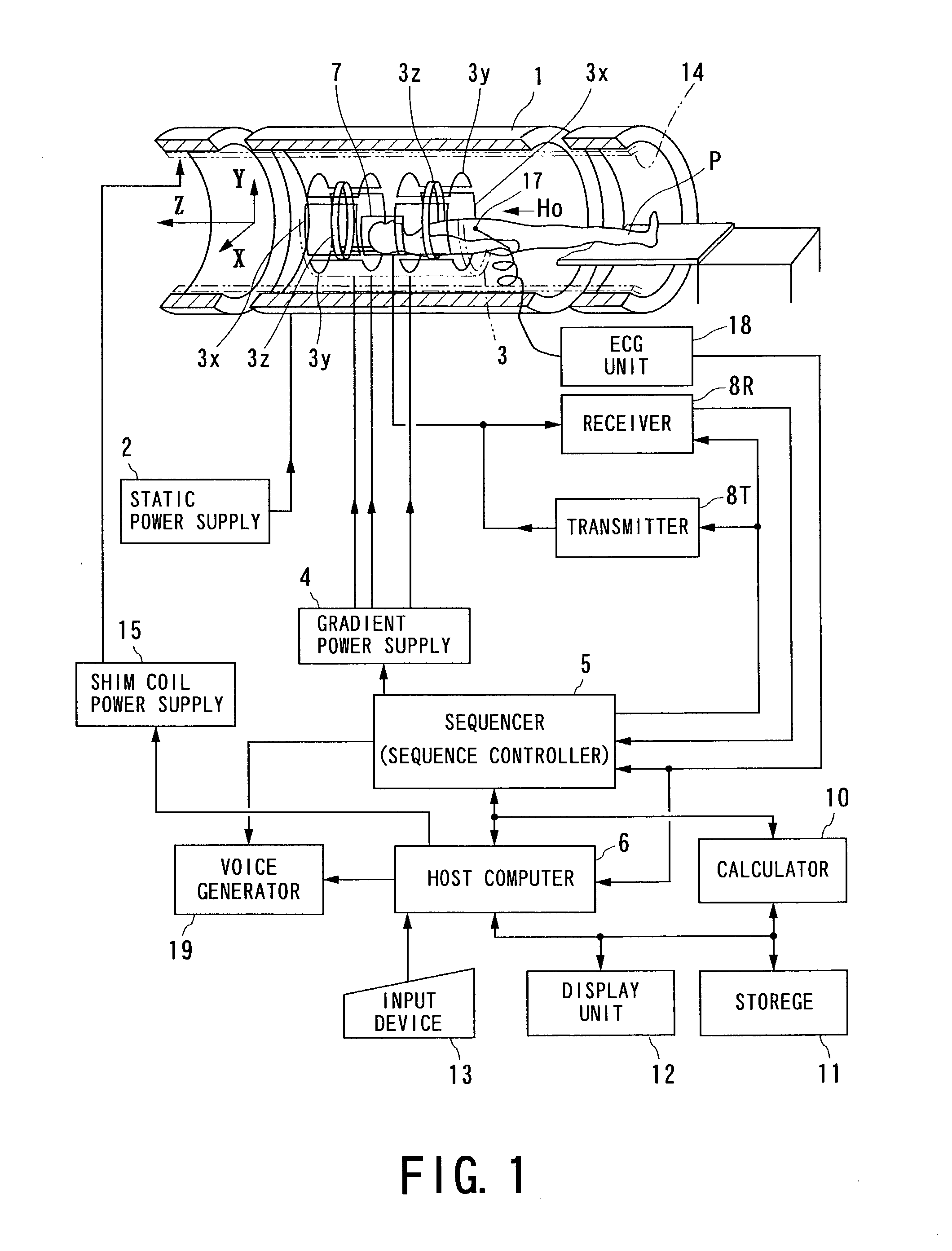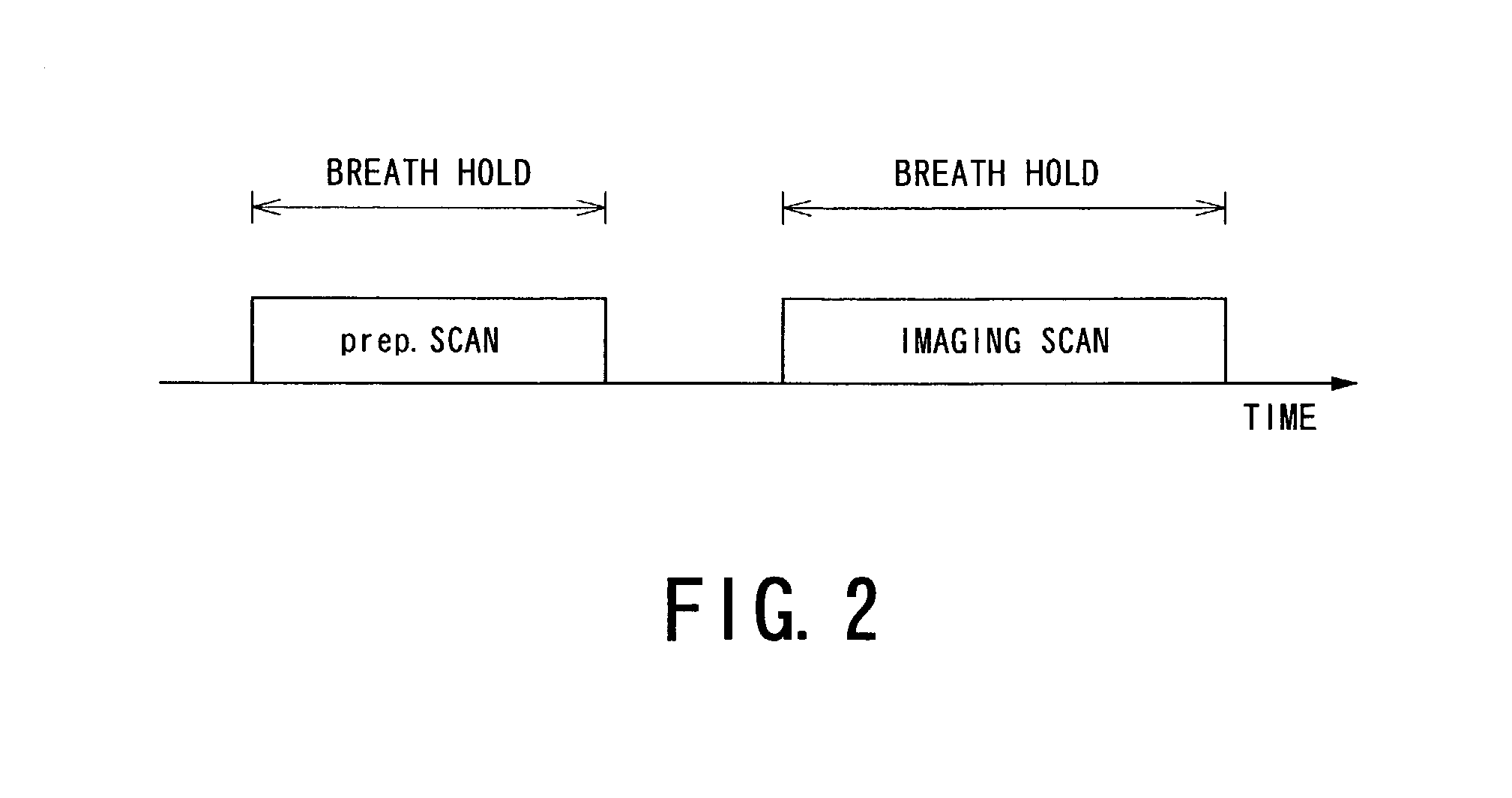Magnetic resonance imaging using preparation scan for optimizing pulse sequence
a pulse sequence and scanning scan technology, applied in the field of magnetic resonance imaging, can solve the problems of not always true, affecting the optimization of various parameters of the pulse sequence used for imaging scan, and reducing the intensity of the echo signal to be acquired,
- Summary
- Abstract
- Description
- Claims
- Application Information
AI Technical Summary
Problems solved by technology
Method used
Image
Examples
Embodiment Construction
[0039] Referring to FIGS. 1 to 13, a first embodiment of the present invention will now be described.
[0040] FIG. 1 a shows an outlined configuration of a magnetic resonance imaging (MRI) system in accordance with the embodiment of the present invention.
[0041] The magnetic resonance imaging system comprises a patient couch on which a patient P as an object to be imaged lies down, static-field generating part for generating a static magnetic field, magnetic-gradient generating part for appending positional information to a static magnetic field, transmitting / receiving part for transmitting and receiving radio-frequency (RF) signals, controlling / calculating part responsible for the control of the whole system and for image reconstruction, electrocardiographing part for acquiring an ECG signal serving as a signal indicative of cardiac phases of the object P, and breath-hold instructing part for instructing the object to perform a temporary breath hold.
[0042] The static-field generating ...
PUM
 Login to View More
Login to View More Abstract
Description
Claims
Application Information
 Login to View More
Login to View More - R&D
- Intellectual Property
- Life Sciences
- Materials
- Tech Scout
- Unparalleled Data Quality
- Higher Quality Content
- 60% Fewer Hallucinations
Browse by: Latest US Patents, China's latest patents, Technical Efficacy Thesaurus, Application Domain, Technology Topic, Popular Technical Reports.
© 2025 PatSnap. All rights reserved.Legal|Privacy policy|Modern Slavery Act Transparency Statement|Sitemap|About US| Contact US: help@patsnap.com



